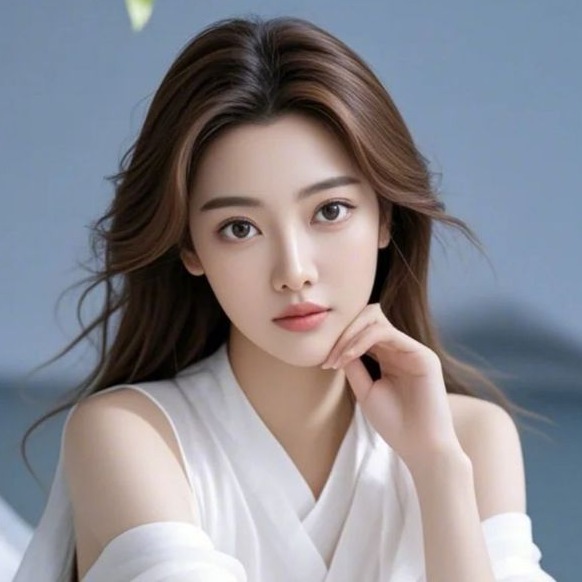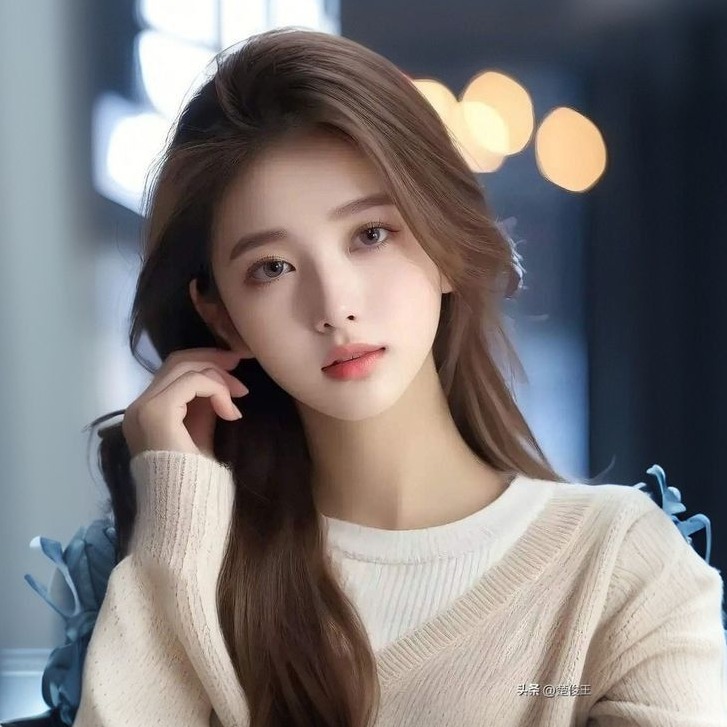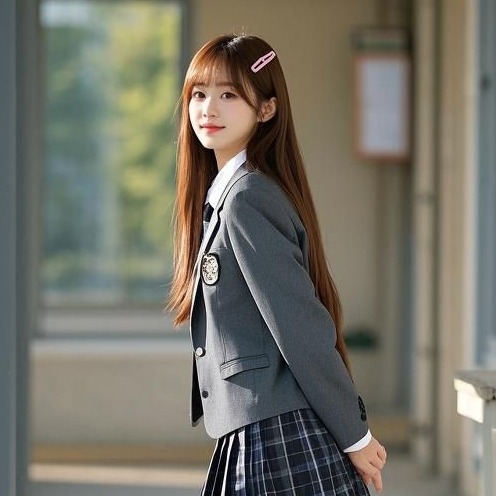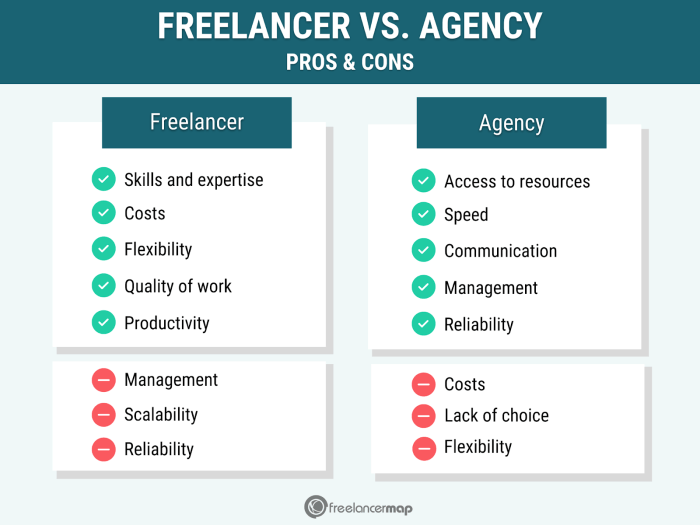When AI Meets Beauty: Virtual Women of the World sets the stage for this enthralling narrative, offering readers a glimpse into a story that is rich in detail and brimming with originality. As we delve into the realm where artificial intelligence intersects with beauty, a fascinating journey awaits, exploring the evolution, technology, ethical considerations, and future prospects of virtual women in the beauty industry.
Introduction to Virtual Women in AI Beauty
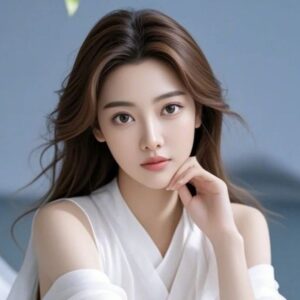
Virtual women in the realm of AI and beauty refer to digitally created personas that showcase various beauty standards and trends through artificial intelligence technology.
These virtual women play a significant role in the beauty industry by allowing for the exploration of diverse aesthetics, trends, and styles without the limitations of physical constraints. They provide a platform for creativity and innovation in the beauty world.
Significance of Virtual Women in the Beauty Industry
- Virtual women offer a space for experimentation with new beauty trends and styles, pushing the boundaries of traditional beauty standards.
- They allow for the exploration of different cultures and beauty ideals, promoting inclusivity and diversity in the industry.
- Virtual women can be used as models for showcasing makeup looks, hairstyles, and skincare routines, providing inspiration for consumers and professionals alike.
AI’s Transformation of Beauty Perception through Virtual Women
- Artificial intelligence technology enables the creation of hyper-realistic virtual women that challenge conventional beauty norms and redefine standards of attractiveness.
- AI algorithms analyze data on beauty preferences and trends to generate virtual women that resonate with a wide range of audiences, catering to individual tastes and preferences.
- Virtual women powered by AI have the potential to revolutionize the beauty industry by offering personalized beauty recommendations and enhancing the overall consumer experience.
Evolution of Virtual Women in AI Beauty
Virtual women in AI beauty applications have come a long way since their inception. Let's delve into the historical development of these virtual women and how they have evolved over time.
Early Development of Virtual Women in AI Beauty
- Early virtual women in AI beauty applications were basic and lacked realistic features.
- These models often had limited customization options and were unable to adapt to different skin tones or facial features.
- Despite their limitations, early virtual women paved the way for more advanced developments in the beauty sector.
Key Milestones in Integrating AI and Virtual Women
- The integration of AI technology allowed for more realistic virtual women with advanced customization options.
- Key milestones, such as the development of AI algorithms for skin tone matching and facial recognition, revolutionized the way virtual women are created.
- AI-powered virtual women can now simulate real-life beauty transformations and provide personalized beauty recommendations.
Comparison of Early Virtual Women Models with Modern AI-Powered Virtual Women
- Modern AI-powered virtual women are more lifelike and responsive compared to their early counterparts.
- Advanced AI algorithms enable modern virtual women to analyze facial features, skin conditions, and makeup preferences to provide tailored beauty solutions.
- Early virtual women models lacked the sophistication and realism that modern AI-powered virtual women offer in the beauty sector.
Technology Behind Virtual Women in AI Beauty
The creation of realistic virtual women in AI beauty applications involves a combination of advanced technologies to enhance their appearance and interactions with users. Machine learning and algorithms play a crucial role in achieving lifelike features and behaviors in these virtual characters.
Facial Recognition Technology
Facial recognition technology is a key component in developing virtual women in AI beauty. It allows for the analysis of facial features, expressions, and emotions, enabling these virtual characters to react realistically to different situations.
Generative Adversarial Networks (GANs)
Generative Adversarial Networks (GANs) are commonly used to generate high-quality images of virtual women by training two neural networks simultaneously. One network generates realistic images, while the other network evaluates the generated images for authenticity, resulting in more lifelike virtual characters.
3D Modeling Software
D modeling software, such as Blender and Autodesk Maya, is utilized to create detailed and realistic virtual women in AI beauty applications. These tools enable developers to design and customize the appearance of virtual characters with precision
.
Texture Mapping and Rendering Techniques
Texture mapping and rendering techniques are employed to add depth, texture, and visual effects to virtual women in AI beauty. These techniques enhance the overall aesthetics of virtual characters, making them more visually appealing and lifelike.
Voice Synthesis and Natural Language Processing
Voice synthesis and natural language processing technologies are integrated to provide virtual women in AI beauty with the ability to communicate verbally with users. These technologies contribute to creating a more immersive and interactive experience for users interacting with virtual characters.
Ethical Considerations in AI Beauty with Virtual Women
As artificial intelligence continues to advance in the beauty industry, it brings forth a myriad of ethical considerations regarding the creation and use of virtual women for beauty purposes. These considerations delve into the societal impact, perpetuation of beauty standards, and the risks associated with AI-generated virtual women.
Perpetuating Idealized Beauty Standards
When AI is utilized to create virtual women for beauty purposes, there is a risk of perpetuating idealized beauty standards that may not be realistic or attainable. These virtual women often embody unrealistic physical features that can contribute to the normalization of unattainable beauty standards, potentially impacting the self-esteem and body image of individuals.
Societal Impact
The proliferation of AI-generated virtual women in the beauty industry can have a significant societal impact by influencing perceptions of beauty and femininity. The widespread exposure to these virtual women may lead to a homogenization of beauty ideals, diminishing diversity and promoting a narrow definition of attractiveness that excludes marginalized groups.
Risks and Challenges
There are several risks and challenges associated with the use of virtual women in the beauty industry powered by AI. These include concerns regarding privacy and data security, as well as the potential for exploitation and objectification of virtual women.
Additionally, there is a risk of humanization of AI-powered virtual women, blurring the lines between reality and fantasy, which can have implications on human relationships and societal norms.
Future Prospects of Virtual Women in AI Beauty

Virtual women in AI beauty have the potential to revolutionize the beauty industry in the future. With the continuous advancements in AI technology, these virtual women can become even more realistic and personalized, offering unique beauty experiences to users.
Integration of AI in Virtual Women
AI integration in virtual women could reshape the beauty industry by providing hyper-personalized beauty solutions. Through AI algorithms, virtual women can analyze skin types, facial features, and preferences to recommend tailored beauty products and routines. This level of customization can enhance user experience and satisfaction, leading to increased brand loyalty and trust.
Advancements in AI Technology
As AI technology evolves, virtual women can be enhanced with more realistic features such as natural movements, emotions, and interactions. Improved natural language processing and computer vision capabilities can enable virtual women to engage in meaningful conversations, offer real-time advice, and demonstrate beauty techniques virtually.
These advancements can create immersive and interactive beauty experiences for users, blurring the line between reality and virtuality.
Personalized Beauty Experiences
The future of virtual women in AI beauty lies in offering personalized beauty experiences tailored to individual needs and preferences. AI-generated virtual women can assist users in trying out different makeup looks, hairstyles, and skincare routines virtually before making any purchase decisions.
By leveraging AI algorithms to understand user preferences and behaviors, virtual women can recommend personalized beauty tips, trends, and products that align with each user's unique style and goals. This level of customization can empower users to explore new beauty trends, experiment with different looks, and discover their personal beauty journey in a virtual environment.
Final Wrap-Up
In conclusion, the fusion of AI and virtual women in the beauty sector opens up a world of possibilities, shaping the industry's landscape in unprecedented ways. From redefining beauty standards to paving the path for personalized beauty experiences, the future holds exciting prospects for AI-powered virtual women.
Common Queries
What are virtual women in AI beauty?
Virtual women in AI beauty refer to computer-generated female models created using artificial intelligence technology to simulate realistic appearances for various beauty-related applications.
How is AI transforming the perception of beauty through virtual women?
AI is revolutionizing the beauty industry by enabling the development of hyper-realistic virtual women that challenge traditional beauty norms and offer new standards of aesthetic appeal.
What ethical considerations are involved in creating virtual women for beauty purposes using AI?
There are ethical concerns surrounding the perpetuation of idealized beauty standards and the potential societal impact of unrealistic beauty portrayals through AI-generated virtual women.
 Virtual women in the realm of AI and beauty refer to digitally created personas that showcase various beauty standards and trends through artificial intelligence technology.
These virtual women play a significant role in the beauty industry by allowing for the exploration of diverse aesthetics, trends, and styles without the limitations of physical constraints. They provide a platform for creativity and innovation in the beauty world.
Virtual women in the realm of AI and beauty refer to digitally created personas that showcase various beauty standards and trends through artificial intelligence technology.
These virtual women play a significant role in the beauty industry by allowing for the exploration of diverse aesthetics, trends, and styles without the limitations of physical constraints. They provide a platform for creativity and innovation in the beauty world.
 Virtual women in AI beauty have the potential to revolutionize the beauty industry in the future. With the continuous advancements in AI technology, these virtual women can become even more realistic and personalized, offering unique beauty experiences to users.
Virtual women in AI beauty have the potential to revolutionize the beauty industry in the future. With the continuous advancements in AI technology, these virtual women can become even more realistic and personalized, offering unique beauty experiences to users.
